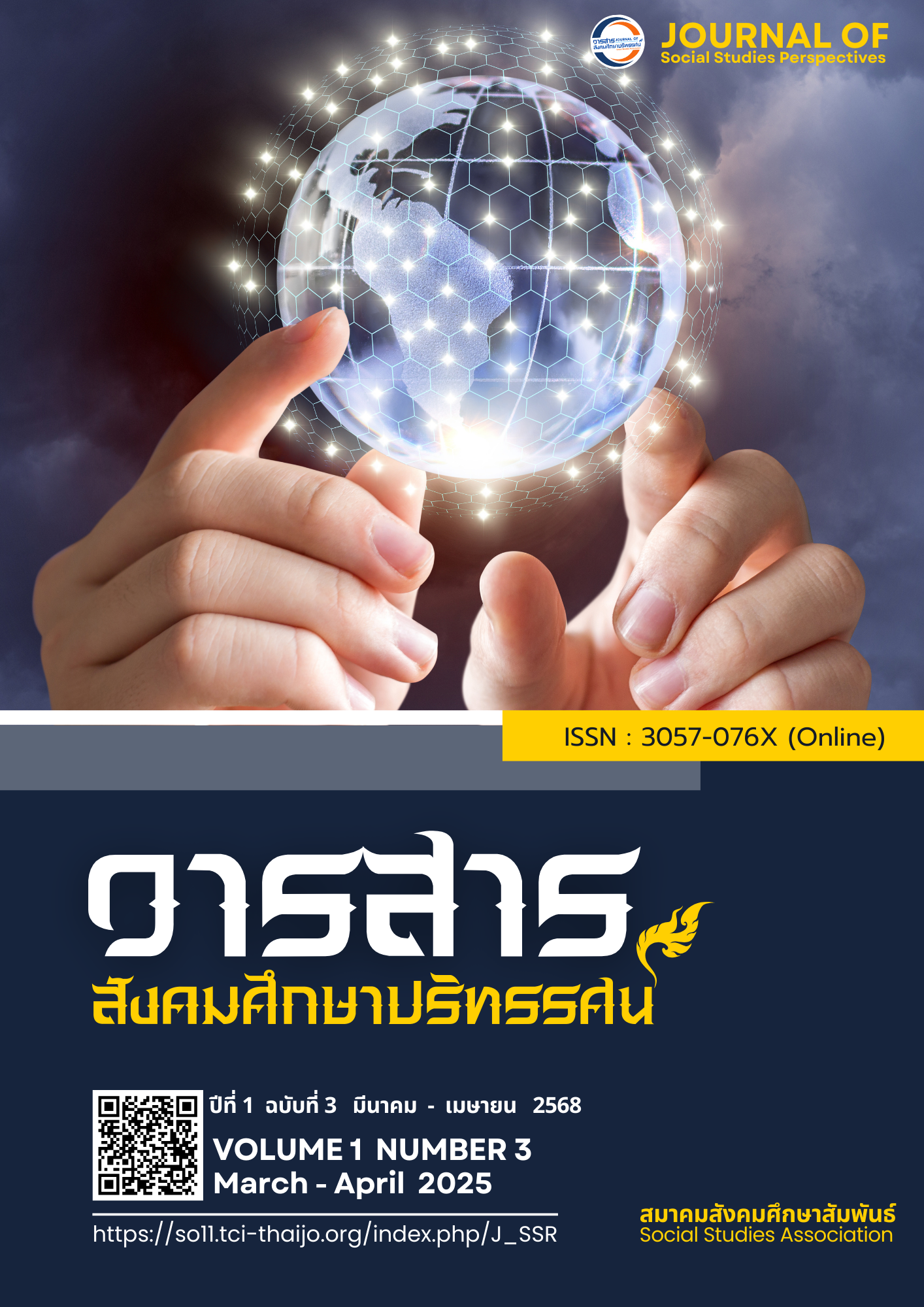SCHOOL ADMINISTRATION STRATEGIES FOR CREATING EDUCATIONAL OPPORTUNITIES
DOI:
https://doi.org/10.64186/jsp1452Keywords:
School Administration Strategies , Educational Opportunities, Educational Technology, Resource Management, Collaborative NetworksAbstract
This article presents school administration strategies for creating educational opportunities, which are crucial for enhancing learning quality and promoting educational equity. Key strategies include establishing a clear vision and mission to align organisational goals, strategic planning with flexibility to adapt to societal changes, efficient resource management to ensure sustainable school operations, and integrating educational technology to expand learning accessibility, particularly for students with limitations. Additionally, this article emphasises the importance of building networks and fostering collaboration between schools, government agencies, private sectors, and communities to support resources and knowledge for educational development. Case studies of successful schools implementing these strategies are also examined. The findings indicate that well-structured and adaptable school administration can reduce educational disparities and enhance learning quality. Therefore, school administration strategies serve as a fundamental mechanism for creating educational opportunities that can be adapted to different contexts, contributing to an efficient, inclusive, and sustainable education system in the long term.
References
Asdawut S. (2022). School Administration: Theory and Practice. Bangkok: Educational Publisher.
Ally, M. (2021). Foundations of Educational Technology: Integrating Technology in Education. Routledge.
Borkowski, N. (2021). Strategic Management in Educational Institutions: Trends and Challenges in the Post-COVID Era. Springer.
Boudah, D. (2020). Resource Management and Funding in Education: Maximizing Opportunities for School Improvement. Educational Finance Journal, 27(4), 57-72.
Bryk, A. S1., Gomez, L2., & Grunow, A3. (2021). Learning to Improve: How America's Schools CanGet Better at Getting Better. Harvard Education Press.
Bryson, J. M. (2018). Strategic planning for public and nonprofit organizations: A guide to strengthening and sustaining organizational achievement. John Wiley & Sons.
Choi, J. (2021). Future directions in educational technology integration: Strategies for developing adaptive learning environments. International Journal of Educational Research, 98(2), 54-67.
Choi, J1., & Lee, S2. (2020). Collaborative education partnerships for enhancing digital skills in the 21st century. Journal of Educational Technology & Society, 23(1), 115-128.
Darling-Hammond, L. (2020). The Right to Learn: A Blueprint for Creating Schools that Work. Jossey-Bass.
Epstein, J. L. (2018). School, family, and community partnerships: Preparing educators and improving schools. Routledge.
Fullan, M. (2021). Leading in a Culture of Change: Achieving Success in Schools. Jossey-Bass.
García, M. (2022). Innovation and Strategy in Education: The Role of Technology and Collaboration. Journal of Educational Administration, 60(2), 156-172.
Guskey, T. R. (2002). Professional development and teacher change. Teachers and Teaching. Theory and Practice, 8(3), 381-391.
Gürel, E1., & Tat, M2. (2017). The role of strategic alliances in higher education: Opportunities for academic innovation. Educational Management Administration & Leadership, 45(2), 253-272.
Gürel, E1. & Tat M2. (2017). SWOT analysis: A theoretical review. Journal of International Social Research, 10(51), 994-1006.
Hallinger, P. (2011). Leadership for learning: Lessons from 40 years of experience. Journal of Educational Administration, 49(2), 125-151.
Harris, A1., & Jones, M2. (2020). Leading Schools in a Digital Era: From Strategy to Action. Educational Leadership, 78(4), 10-17.
Hargreaves, A1., & Fullan, M2. (2012). Professional capital: Transforming teaching in every school. Teachers College Press.
Hongkhuntod, N. (2023). Strategies for school management in the new normal (Master’s thesis). Siam University.
Hongkhuntod, N1., Bunjant, B2., & Napakhun, A3. (2024). Strategies for school management in the new normal era. Journal of the Association for Professional Development of Educational Administration in Thailand, 6(1), 45-60.
Jackson, D1. A., Smith, P2., & Davis, M. J3. (2021). Strategies for Educational Leadership in the Age of Technology: Challenges and Innovations. Journal of Educational Management, 45(2), 234-249.
Jones, M1., & Smith, T2. (2023). Collaborative Partnerships for Education Development in a Digital Age. Education and Technology Journal, 32(4), 342-359.
Kriangkrai, K. (2020). The development of educational administration processes for the modern era. Bangkok: Academic Publisher.
Kotter, J. P. (2012). Leading change. Harvard Business Press.
Khan, S1., Alghamdi, A2., & Qureshi, M3. (2021). Strategic Educational Planning: Global Trends and Local Solutions. Wiley-Blackwell.
Leithwood, K1., Harris, A2., & Hopkins, D3. (2020). Seven Strong Claims About Successful School Leadership. School Leadership & Management, 40(1), 5-27.
Michael, L1., & Roberts, K2. (2022). Sustainability in Education: Strategies for Change and Innovation. Springer.
Ministry of Education. (2021). Report on Educational Management during the COVID-19 Pandemic. Bangkok: Ministry of Education.
Mintzberg, H. (1994). The rise and fall of strategic planning: Reconceiving roles for planning, plans, planners. Free Press.
Moore, M. G. (2020). Distance Education: A Systems View of Online Learning. Wadsworth Publishing.
Office of the Basic Education Commission. (2021). Basic Education School Administration. Bangkok: Office of the Basic Education Commission.
Office of the Education Council. (2019). The National Strategy (2018-2037). Bangkok: Office of the Education Council.
Porter, M. E. (1996). What is strategy?. Harvard Business Review, 74(6), 61–78.
Resta, P1., & Smith, M2. (2021). Digital Literacy and the Role of Technology in Education. Springer.
Rosen, M1., & Sears, A2. (2022). Skills for the 21st Century: An Educational Approach. Wiley.
Selwyn, N. (2016). Education and Technology: Key Issues and Debates. Continuum International Publishing Group.
Sultan, A. (2020). Management of Educational Resources for Better Learning Outcomes. Springer.
Thipdee, J., & et al. (2023). Strategies for school management towards becoming a learning organization. Journal of Education and Development, 15(2), 45-60. https://so06.tci- thaijo.org/index.php/JSSP/article/view/261376
Yongyoot, S. (2022). The Strategies for School Administration in the Era of New Normal (A Thesis for The Doctor of Philosophy). Silpakorn University, Nakhon Pathom.
Downloads
Published
How to Cite
Issue
Section
Categories
License
Copyright (c) 2025 Journal of social studies perspectives

This work is licensed under a Creative Commons Attribution-NonCommercial-NoDerivatives 4.0 International License.
The article is published under the Creative Commons Attribution-NonCommercial-NoDerivatives 4.0 International (CC BY-NC-ND 4.0) license, which allows others to share the article while giving appropriate credit to the author. It prohibits the use of the article for commercial purposes or the creation of derivative works. Any other reuse or reproduction requires permission from the journal.










